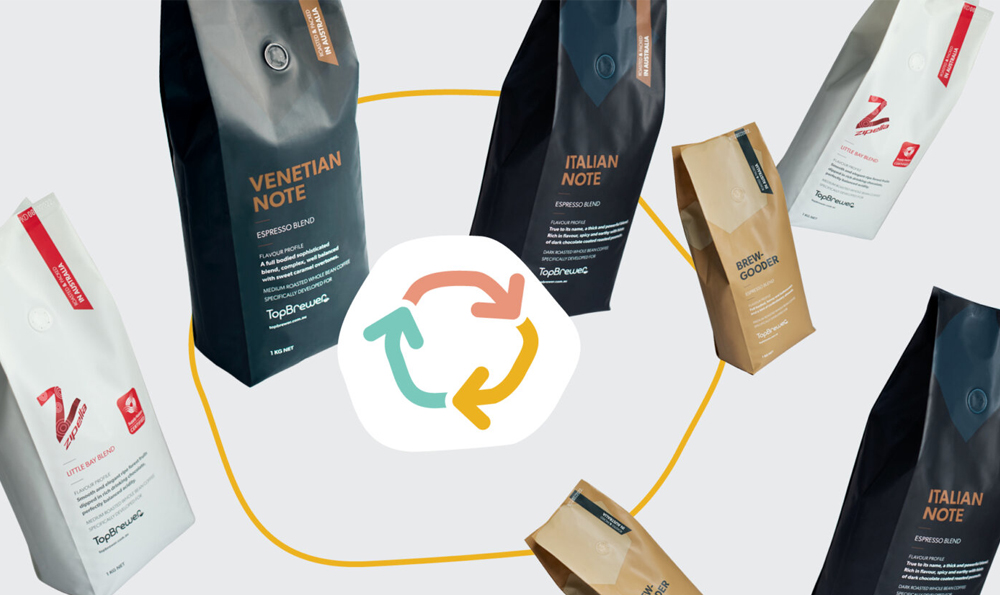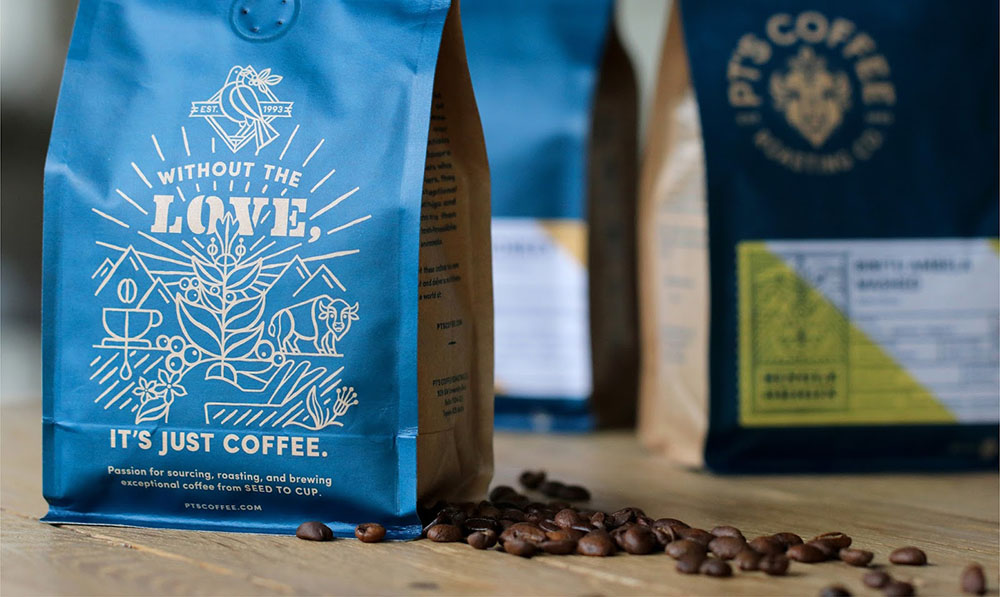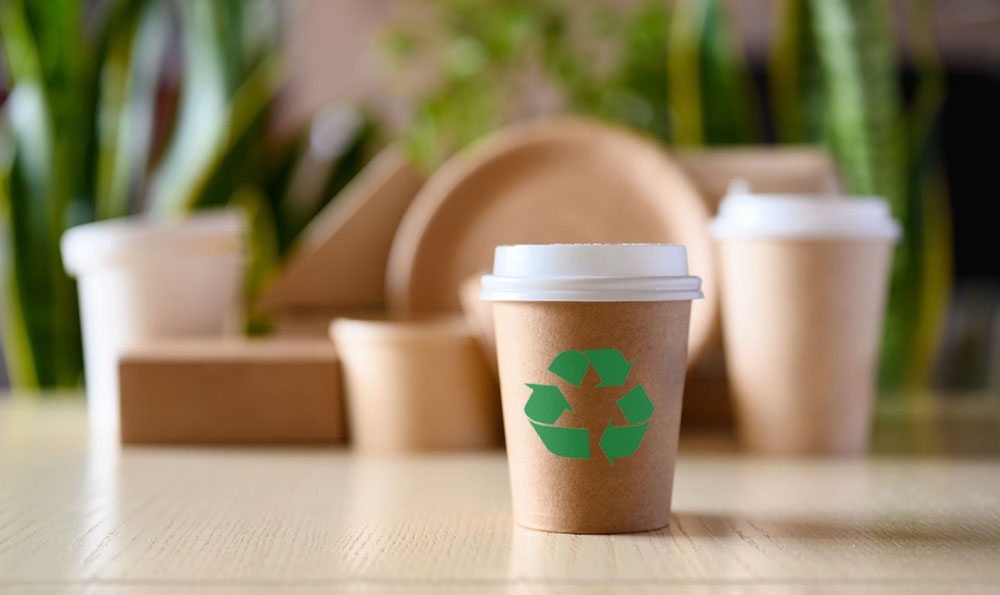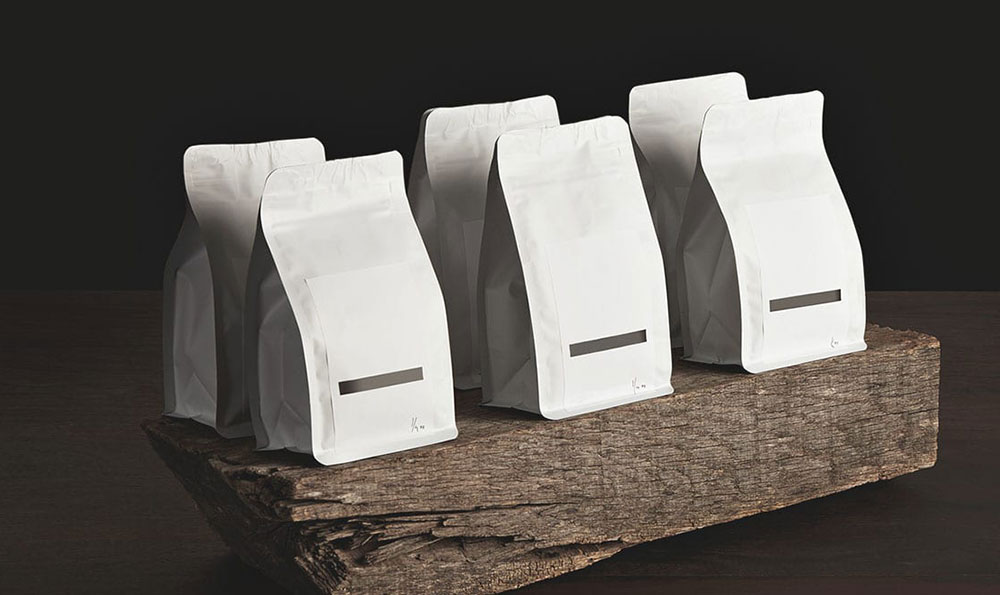Views: 15 Author: Site Editor Publish Time: 2025-06-10 Origin: Site







Why is eco-friendly packaging so important? Traditional packaging materials harm the environment and contribute to waste. Consumers are increasingly demanding sustainable alternatives, and brands must respond. In this post, we’ll explore the environmental benefits, growing demand, and long-term advantages of adopting eco-friendly packaging solutions.

Eco-friendly packaging refers to materials and solutions designed to reduce the environmental impact of packaging. These materials are made from renewable resources and are often recyclable, biodegradable, or compostable. By shifting to these types of packaging, businesses help protect the environment while meeting consumer demand foxr sustainability.
It’s important to understand the differences between these types of packaging:
| Type of Packaging | Definition | Example Use | Breakdown Process |
|---|---|---|---|
| Recyclable | Can be reused in a recycling process to create new products | Cardboard, glass, aluminum | Recycled into new products through a recycling process |
| Biodegradable | Breaks down naturally over time in natural environments | PLA, cornstarch, sugarcane | Breaks down in a landfill or other natural environments |
| Compostable | Breaks down in industrial composting facilities, creating nutrient-rich soil | Paper-based composites, certain PLA products | Breaks down in composting environments into soil |
Each type has different environmental benefits and usage requirements, making it essential to choose the right option for your product.
Traditional packaging materials, like plastic, contribute to pollution, waste, and carbon emissions. Eco-friendly packaging helps reduce this impact by using renewable resources and reducing the overall carbon footprint of the product.
Consumers today are more eco-conscious than ever before. A large number of them prefer brands that use sustainable packaging. By switching to eco-friendly packaging, brands can attract these consumers and build a stronger relationship with their audience.
Governments around the world are introducing regulations to curb plastic waste and promote sustainable packaging. Adopting eco-friendly packaging ensures your business complies with these regulations and avoids potential penalties.

Choosing the right materials is key to reducing environmental impact. Eco-friendly packaging materials can be biodegradable, recyclable, or compostable. These options help protect the planet while still serving their packaging needs effectively.
PLA (Polylactic Acid): PLA is a plant-based plastic made from renewable resources like corn or sugarcane. It's commonly used for food and beverage packaging. PLA breaks down more easily than traditional plastics, reducing landfill waste.
Paper-Based Packaging: Paper made from recycled fibers is an excellent alternative. It’s biodegradable, recyclable, and works well for many products.
Other Biodegradable Materials: Materials like cornstarch, sugarcane, and bamboo are gaining popularity. They offer biodegradable alternatives that decompose naturally, reducing pollution.
Recyclable packaging can be reused to create new products, conserving resources and minimizing waste.
| Recyclable Material | Example Use | Recyclability Benefit |
|---|---|---|
| Cardboard | Shipping boxes, retail packaging | 100% recyclable, commonly reused in paper products |
| Glass | Bottles, jars | Can be reused indefinitely without loss of quality |
| Aluminum | Cans, packaging | Highly recyclable and can be reused infinitely |
Compostable materials break down in composting environments, turning waste into nutrient-rich soil.
Role in Reducing Landfill Waste: Compostable packaging helps divert waste from landfills by breaking down into natural materials, unlike plastic.
Certifications to Look For:
DIN CERTCO: Certifies materials that break down in industrial composting.
ASTM D6866: Confirms that the material is made from renewable, bio-based resources.
Example for Coffee Packaging: PLA combined with paper-based materials is commonly used for coffee packaging. These composites are effective in preserving the coffee's freshness and are compostable.
When choosing packaging materials, it's important to identify those that are genuinely sustainable. Watch out for “greenwashing,” where companies may label products as eco-friendly without meeting proper standards.
Third-Party Certifications: Look for trusted certifications like BRC, ISO 22000, and EN 13432. These validate that the material meets high environmental standards.
Example: The BIO046 flat-bottom coffee bag, made from PLA and paper composites, carries certifications proving its compostability and biodegradability, making it an excellent eco-friendly packaging solution.

Custom eco-friendly packaging allows you to align your brand with sustainability efforts, making it a key part of your identity. Tailoring your packaging to reflect your brand’s values helps create a unique consumer experience. Plus, it strengthens brand loyalty by showing your commitment to the environment.
Reflecting Brand Values: Packaging tells your story. Customizing it to highlight your eco-conscious efforts builds trust with your audience.
Consumer Experience: When consumers see a brand that prioritizes sustainability, they feel more connected and likely to return.
Custom eco-friendly packaging offers numerous design options. These options let you clearly communicate your sustainability message while also attracting environmentally-conscious customers.
Logo Printing with Soy-Based Inks: Using eco-friendly soy-based inks reduces harmful chemicals in the printing process. It’s a simple way to make your packaging more sustainable.
Eco Messaging: Clear messaging about your sustainability efforts, such as "compostable," "biodegradable," or "made from recycled materials," informs customers about the product’s environmental benefits.
Environmental Symbols and Certifications: Adding trusted symbols like composting icons or FSC certifications helps customers easily identify your commitment to sustainability.
Brand Storytelling: Integrating storytelling into packaging design is a great way to engage customers. For instance, a “From Seed to Cup” approach for coffee brands shows the journey from sourcing beans to the eco-friendly packaging.
A premium coffee brand switched to custom PLA flat-bottom bags. The bags were designed with eco-friendly materials and clearly labeled "100% Compostable." This decision not only aligned with their sustainability goals but also enhanced the brand’s appeal.
Results: The packaging change helped the brand boost its sales and customer loyalty. In fact, they saw a 22% increase in repeat purchases after the switch. The clear eco-friendly messaging resonated well with customers, solidifying the brand’s commitment to the environment.
Food packaging faces unique challenges. It must protect the product while also being sustainable. Eco-friendly packaging solutions must strike a balance between preserving food and reducing environmental impact.
Challenges: Food packaging needs to maintain freshness, prevent contamination, and extend shelf life. Balancing these needs with sustainability can be tricky.
Solutions: Biodegradable films, paper-based packaging, and compostable materials provide alternatives to plastic. These materials offer effective barriers against moisture and oxygen.
| Example Product | Packaging Material | Sustainability Benefit |
|---|---|---|
| Snacks | PLA-based bags | Biodegradable, recyclable |
| Grains | Paper/corn starch | Compostable, reduces landfill waste |
| Beverages | Recycled paperboard | Recycled material, reduces plastic |
Case Study: An Australian dried fruit brand switched to Kraft/PLA zipper bags with a "compost with food waste" label. This eco-friendly packaging not only helped reduce waste but also boosted repeat purchases by 30%.
Coffee brands are leading the shift to eco-friendly packaging. Coffee requires packaging that ensures freshness, prevents moisture, and extends shelf life. Eco-friendly solutions offer all of these benefits without harming the environment.
Sustainability in Coffee: The coffee industry is increasingly adopting biodegradable materials like PLA combined with paper. These solutions help preserve freshness while being compostable.
Focus on Freshness: Packaging for coffee must maintain air-tightness and moisture control. PLA paper composites, along with biodegradable valves, offer the perfect solution.
Impact on Brand Perception: Customers appreciate brands that prioritize sustainability. Eco-friendly coffee packaging can enhance brand loyalty and improve the overall customer experience.
Case Study: A Canadian coffee roaster switched to PLA flat-bottom bags with one-way valves. These bags improved product shelf life and increased customer satisfaction, showing how eco-friendly packaging boosts both quality and brand reputation.
Sustainability is important across many industries, including cosmetics, personal care, and retail. Packaging for these products can also be eco-friendly without compromising on quality or performance.
Cosmetics and Personal Care: Compostable packaging, glass containers, and recycled plastic can be used for creams, lotions, and shampoos. These materials ensure the products are protected while reducing waste.
Retail Products: Eco-friendly packaging for clothing or accessories can include paper-based materials, reusable bags, or even packaging made from recycled fabrics.
Flexibility: Different products require different materials, and the packaging should reflect the product’s needs. For example, beauty products might require compostable packaging to enhance sustainability while cosmetics may benefit from recyclable glass containers.
Selecting the right packaging requires balancing several factors to meet both environmental and product-specific needs.
| Factor | Considerations |
|---|---|
| Product Type | Different products need different packaging (e.g., food vs. cosmetics) |
| Cost Considerations | Eco-friendly packaging may cost more initially, but can save in the long run |
| Environmental Impact | Consider materials with low carbon footprints and waste |
| Customer Preferences | Align packaging choices with consumer demand for sustainability |
While the upfront cost of eco-friendly packaging may be higher, long-term savings can make it a more affordable choice.
Initial Investment vs. Long-Term Savings: Sustainable packaging can lead to long-term cost savings by reducing waste and energy usage, which can lower operational costs.
Government Incentives: Many governments offer subsidies or incentives for businesses that switch to sustainable packaging. These can help offset the initial investment.
Example: A Canadian coffee roaster switched to eco-friendly PLA bags and received a 10% government subsidy, making the transition more affordable and encouraging more businesses to go green.
Making the switch to eco-friendly packaging can be tricky. Avoid these common mistakes to ensure your transition is successful:
Misunderstanding "Biodegradable" vs. "Compostable" Labels: These terms are often used interchangeably but mean different things. Biodegradable materials break down over time, while compostable materials turn into nutrient-rich soil in industrial composting facilities. Understanding the difference is key to choosing the right packaging.
Using Mixed Materials: Packaging that combines different materials, like paper and plastic, is harder to recycle or compost. Stick to single-material structures when possible to make recycling easier.
Overestimating "Eco-Friendly" Claims: Just because packaging is labeled as "eco-friendly" doesn’t mean it meets the necessary environmental standards. Always look for certifications like BRC, ISO 22000, and EN 13432 to confirm its sustainability.
Focusing Too Much on Aesthetics: While attractive packaging can help sell products, focusing too much on looks can sometimes compromise sustainability. Ensure your design prioritizes eco-friendly materials over purely visual appeal.
Transitioning to eco-friendly packaging may come with challenges, but these strategies can help you navigate the process:
Work with Sustainable Suppliers: Partnering with suppliers who share your sustainability goals makes it easier to maintain eco-friendly packaging standards.
Phase Out Non-Eco-Friendly Packaging: Don’t make the change all at once. Gradually replacing old packaging materials with more sustainable options allows you to test and refine your approach.
Case Study: Small independent coffee brands often test eco-friendly packaging with small batch orders (30 pieces minimum). This reduces financial risk while allowing them to experiment and assess the effectiveness of different materials before scaling up.

When choosing eco-friendly packaging, it's important to ensure that the materials meet certain standards. Look for these key certifications:
| Certification | Description | What It Certifies |
|---|---|---|
| BRC | British Retail Consortium certification | Food safety for packaging |
| ISO 22000 | Food safety management system | Safe packaging for food |
| EN 13432 | Industrial compostability standard | Compostable materials |
These certifications validate the sustainability of the materials and give consumers confidence in their eco-friendly claims.
Eco-friendly packaging certifications play a key role in building brand trust and credibility.
Third-Party Validation: Certifications provide independent verification of a brand’s claims. This helps avoid "greenwashing" and ensures transparency in sustainability efforts.
Stand Out in a Crowded Market: In today’s competitive market, certifications can help your brand stand out. Customers are more likely to trust and choose products with recognized eco-friendly certifications.
These credentials help establish your brand as a leader in sustainability, improving consumer perception and encouraging loyalty.
The packaging industry is evolving rapidly, driven by both consumer demand and innovation. Here are some of the latest trends:
Plant-Based and Edible Packaging: Materials like seaweed film and rice-based packaging are becoming popular. These options are not only biodegradable but also safe to consume, offering an exciting new way to reduce waste.
Innovations in Sustainable Packaging Technology: Smart packaging is on the rise. These technologies help monitor the sustainability of products, tracking things like freshness and environmental impact throughout the supply chain.
Looking ahead, the eco-friendly packaging landscape is poised for significant growth. Here are some predictions:
Trends for the Next 5-10 Years: Expect to see even more plant-based and compostable materials as businesses continue to seek alternatives to plastic. Innovations in sustainable materials will make packaging more functional and eco-friendly.
The Role of E-Commerce: As online shopping grows, e-commerce is shaping packaging solutions. Brands are focusing on reducing packaging waste in shipping and creating packaging that can be easily recycled or reused.
Global Policies: Governments worldwide are tightening regulations around packaging waste. Policies to reduce plastic waste and encourage sustainable packaging are expected to continue gaining momentum.
To make your packaging eco-friendly, start by choosing the right materials, customizing your packaging to reflect your brand's values, and choosing packaging solutions suited for your specific industry. Don't forget to secure relevant certifications for credibility.
Adopting sustainability in packaging is crucial for both the environment and business growth. Eco-friendly packaging helps boost customer loyalty and adds value to your products.
Call to Action: Take the first step toward sustainability by exploring eco-friendly packaging options. Contact us today for a free guide or consultation.